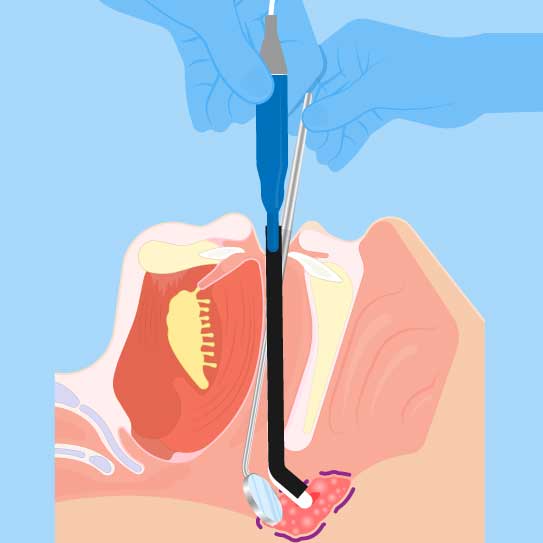Eligibility For Adenoidectomy
Adenoidectomy is a common surgery for children who have issues with their adenoids. Let us look at who might need this procedure:
- Age Range: Generally, children between 3 and 17 are the best candidates for adenoidectomy. However, younger children may also need it if they have serious problems like obstructive sleep apnea or frequent infections.
- Sleep Problems: If a child experiences sleep disorders such as obstructive sleep apnea (OSA), snoring, or other breathing difficulties during sleep, adenoid removal may be necessary to help them breathe better.
- Frequent Infections: Children who often suffer from ear infections, sinus infections, or tonsillitis can benefit from having their adenoids removed. This helps reduce the frequency of these infections.
- Blocked Airways: Enlarged adenoids can cause nasal congestion or mouth breathing. If a child struggles with these issues, removing the adenoids can clear the airway.
Initial Examinations
To see if adenoidectomy is right for your child, doctors usually:
- Take a detailed medical history and perform a physical exam.
- Use X-rays or a nasoscope to check the nasal passages.
- Conduct a sleep study (polysomnogram) if they suspect sleep apnea.
How is Adenoidectomy Performed?
Adenoidectomy is straightforward and relatively quick. This is what happens during the procedure:
- Anaesthesia: Your child will receive general anaesthesia, meaning they will be asleep and will not feel any pain during the surgery.
- Incision: The surgeon makes a small incision at the back of the throat to access the adenoids.
- Removal: The doctor then carefully takes out the adenoid tissue.
- Closure: The incision usually does not need stitches as it heals naturally on its own.
The whole process takes about 20 to 30 minutes. It is important to know that this is a common procedure, and doctors performing adenoidectomy surgery in Alleppey are experienced in ensuring safety and comfort.
How To Prepare For Adenoidectomy?
Preparing for adenoid removal involves several important steps:
- Medical Clearance: Your child’s overall health will be assessed through pre-operative tests to ensure they are fit for surgery.
- Medication Adjustment: The doctor might ask you to stop certain medications like blood thinners before the surgery.
- Fasting Instructions: Follow the doctor’s instructions about when your child should stop eating and drinking before the operation.
- Emotional Preparation: Explain what will happen in simple terms to your child to help them feel comfortable with the process.
- Documents Ready: Make sure you have insurance papers and identification ready on the day of surgery.
Post-Procedure Care After Adenoidectomy
After adenoidectomy, knowing what to expect can help make recovery smoother. These are some tips:
- Pain Management: The doctor will prescribe pain medication to ease discomfort. Make sure to follow the dosage instructions carefully.
- Fluid Intake: Encourage your child to drink plenty of fluids to stay hydrated, but avoid hot drinks at first.
- Rest: Ensure your child gets plenty of rest as their body heals from surgery.
- Soft Foods: Stick with soft foods like yogurt and broth for a few days since they are easier for your child to eat after surgery.
- Avoid Strenuous Activities: Limit activities like running or playing roughly for about a week to prevent any bleeding complications.
- Monitor Recovery: Keep an eye out for signs of fever or excessive bleeding. Contact your doctor if you notice anything unusual.
- Follow-Up Appointments: Do not miss any scheduled follow-up visits with the ENT doctor to ensure proper healing.








.svg)









